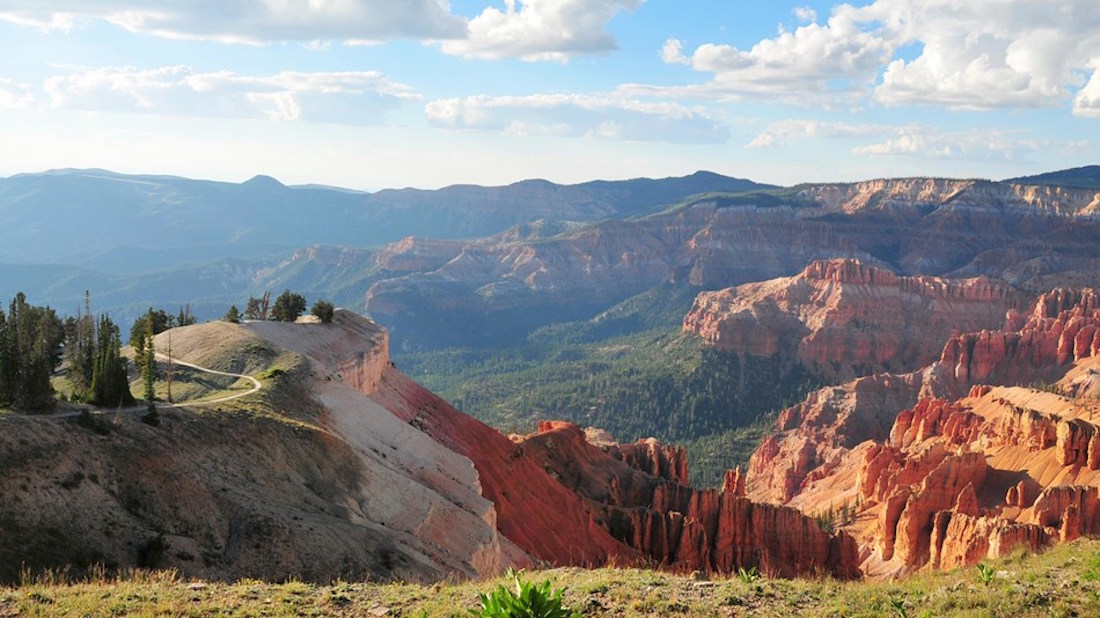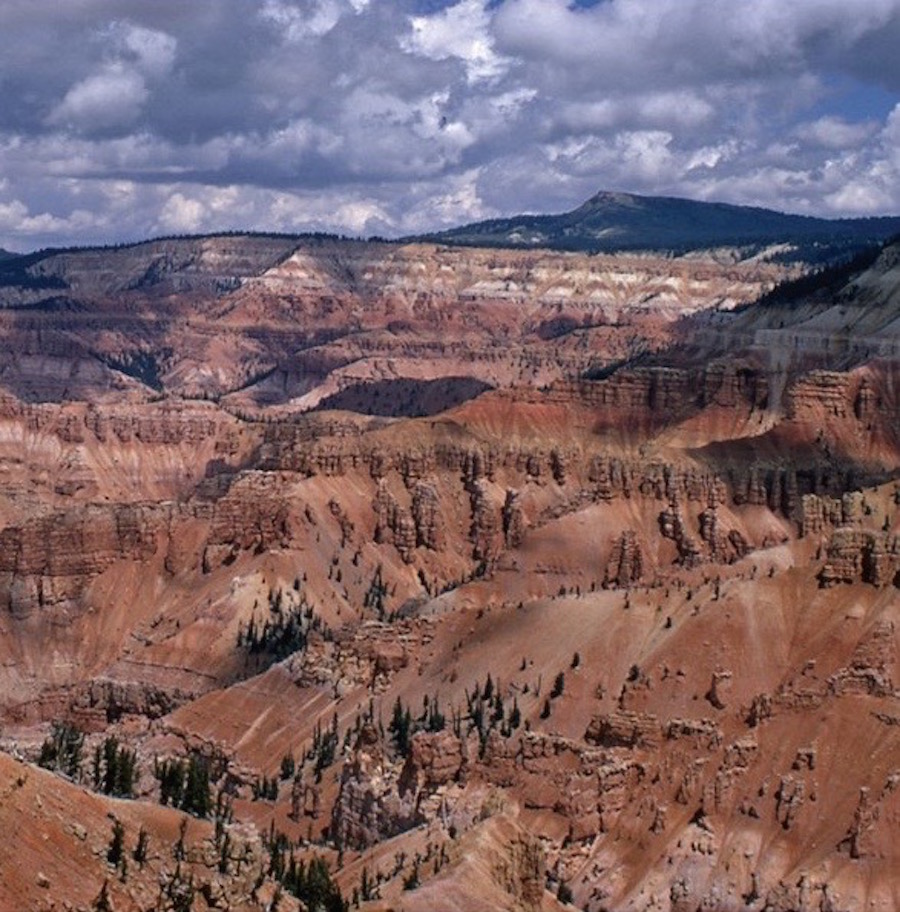Cedar Break National Monument
Inviting visitors

The first tourists to arrive by car to Cedar Breaks occurred in 1919. Between 1920 and 1923 a rustic road was carved from Zion National Park to Cedar Breaks allowing more tourists to discover the splendid landscape. The grandeur of the area was recognized immediately but the isolation and difficulty in reaching such geological magnificence delayed the recognition and final preservation of Cedar Breaks until August 22, 1933. It was on this date that President Franklin D. Roosevelt used the powers of the Antiquities Act to designate this majestic land as the Cedar Breaks National Monument. A late 1930s road advertisement proclaimed that Cedar Breaks National Monument had "countless grotesque and magnificent geological forms, caused by water erosion, anointed with all colors of the rainbow." That description still stands today.
Scenic wonder

A journalist once wrote that "if Cedar Breaks were anywhere but in this Southwest region, it would be picked as one of the world's greatest scenic wonders." But the facts are that remote Cedar Breaks National Monument is near "The Mighty Five" national parks of Utah and just a few hundred miles north of Arizona's Grand Canyon. Sadly, Cedar Breaks is all too often passed by. But for those wanting to view nature at its finest, geology at its most creative beauty and dark skies seldom seen by modern man, a trip to Cedar Breaks National Monument is certainly a journey worth traveling.
Get the world’s most fascinating discoveries delivered straight to your inbox.


